ASUS X99-A Motherboard Review
by Ian Cutress on December 22, 2014 2:00 PM EST- Posted in
- Motherboards
- Intel
- Asus
- Haswell-E
- LGA2011-3
ASUS X99-A Software
The software stack comes under the AI Suite 3 naming convention, where ASUS’ main play in this area comes from the Dual Intelligent Processors 5 (DIP5) interface. The dual intelligent processors part refers to the onboard EPU and TPU ICs which are an ASUS custom designed IC for monitoring and adjusting both the energy and turbo parts of the system. The 5 at the end of the name refers to both the version and the number of sub-apps within the DIP5 interface.
The five sub-apps are the TPU, Fan Xpert, DIGI+ Power Control, EPU and Turbo App. Alongside these is the 5-Way Optimization option that provides a series of settings to help users perform automatic overclocking.
The TPU part of DIP5 offers the CPU overclock settings for ratios, base frequencies, and voltages in terms of offsets and base values. The graphs showing how the voltage adjusts with the CPU ratio are nice touches as they provide direct feedback to the user based on what they are changing.
The fan settings allow users to apply a bulk fan mode to all the fans or go in and adjust them manually. The Fan Tuning button on the left provides a way for the system to analyze the characteristics of each fan attached by applying different fan power levels and measuring the RPM.
The digital power controls are for enthusiasts willing to push the system a little further. The automatic overclock options also adjust these settings slightly, giving extra CPU load-line calibration or placing the power phases into extreme performance mode. There are digital power options for both the CPU and the DRAM on hand.
The EPU part of AI Suite allows the user to adjust what is enabled when the system is in a low power mode. This includes a target power consumption for the CPU by reducing clocks and voltage, but also by disabling fast-charging USB ports and turning down CPU fan speeds.
The final part of 5WO is Turbo App, which is the newest addition to the interface. This allows the user to adjust overclocks and settings depending on what software is currently loaded. This means for a linear workload, a user can have the fans turned down but the single thread speed high, or when a game is played we have a full-core overclock with fast fans and LAN priority for the game in question:
The interface allows each program to be adjusted for importance, so if two software packages are opened and both have a Turbo App profile, the settings of the more important one will take precedence.
The rest of AI Suite is similar to previous generations on the mainstream platform:
Ai Charger: Gives USB 3.0 charging to BC1.1 compliant devices.
USB 3.0 Boost: Gives a Turbo mode to compatible USB devices.
EZ Update: Online updating software, although still has issues.
System Information
USB BIOS Flashback: Arrange a USB for BIOS Flashback.
USB Charger: Allows charging from certain USB ports in sleep, hibernate or shutdown mode.
Push Notice: Synchronize a tablet or smartphone to receive notifications if system parameters (temperature, fan controls) go beyond a specified range.
One element of the software is TurboLAN, which is a reskinned version of cFos that implements software priority over the network:
ASUS has preinstalled settings for VoIP, Media, Games or File Sharing, although users can adjust these as required.
One point I would like to request from ASUS is for the Update software to receive an update. As far as it has been part of the ASUS software ecosystem, from the UK it has only ever worked once for me. This is a system that MSI had solved a while ago, with ASRock and GIGABYTE implementing their own systems that work. ASUS is still far behind in this regard.
The software package also comes with CPU-Z in order to identify the system:
As well as Boot Setting to allow for easy entry into the BIOS or enabling Fast Boot modes:


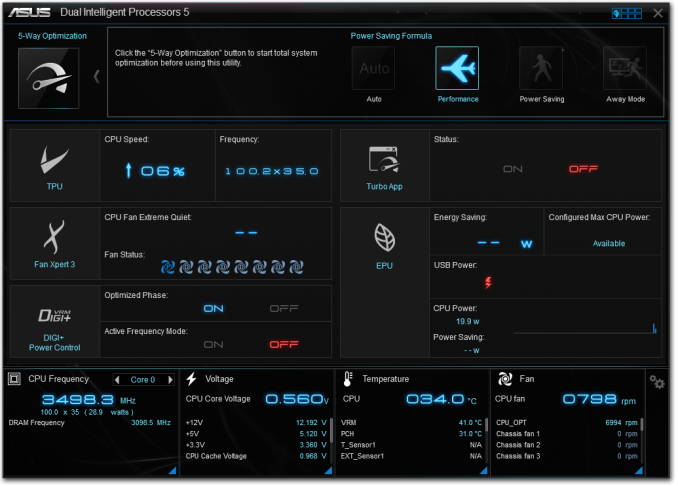

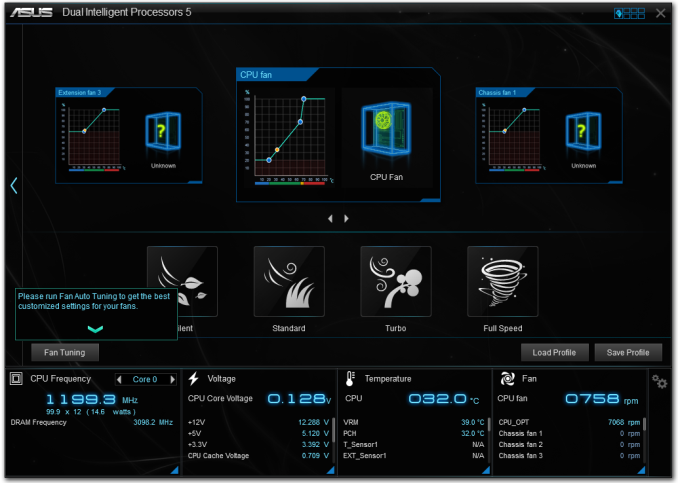

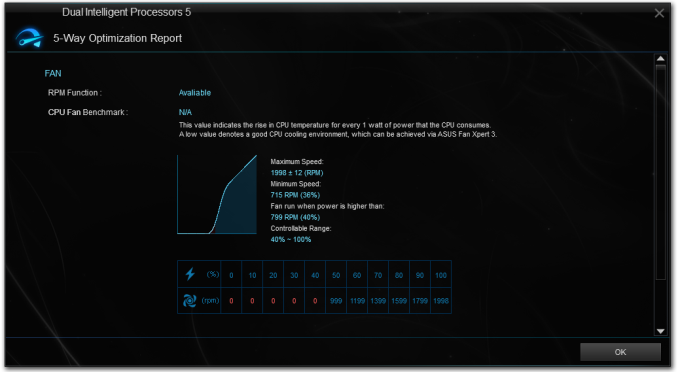
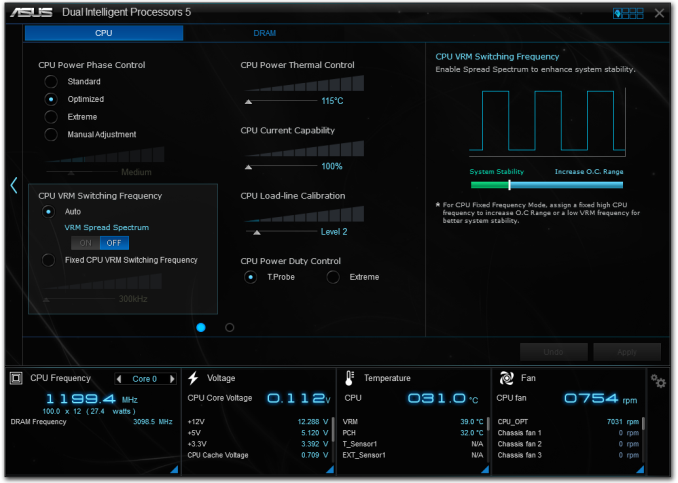
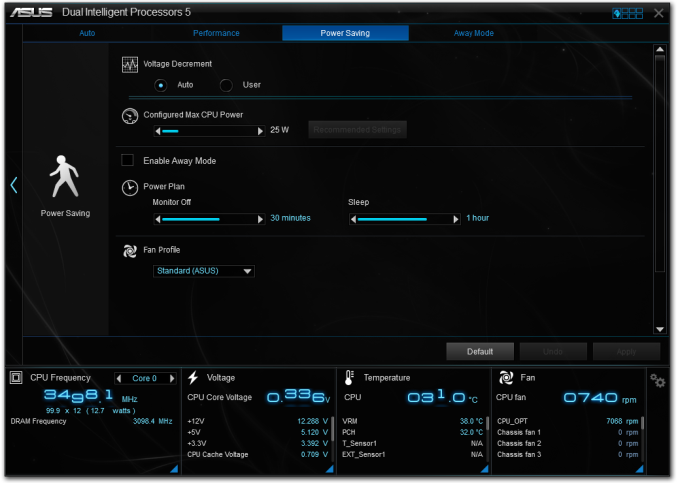
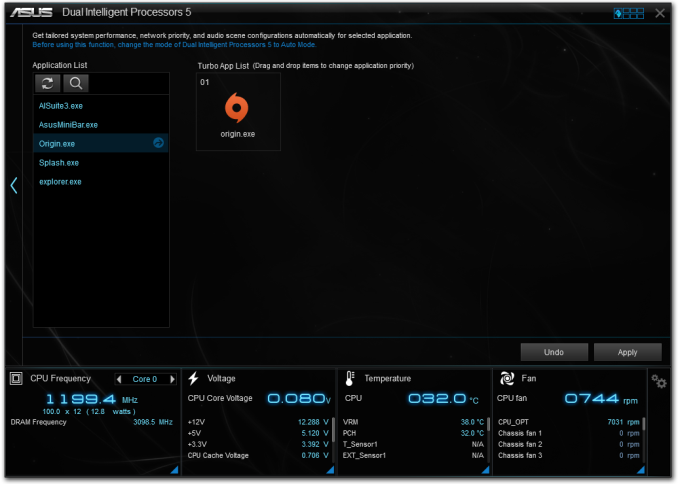
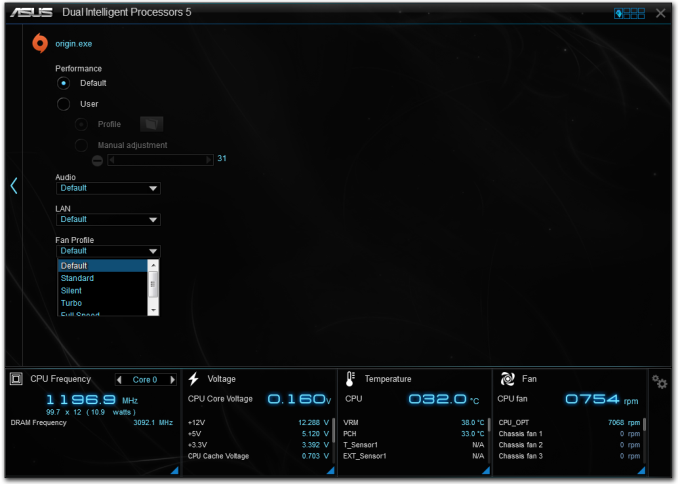
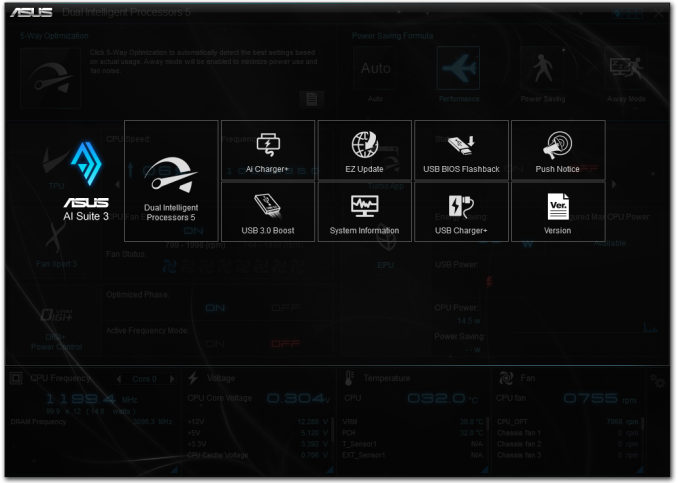
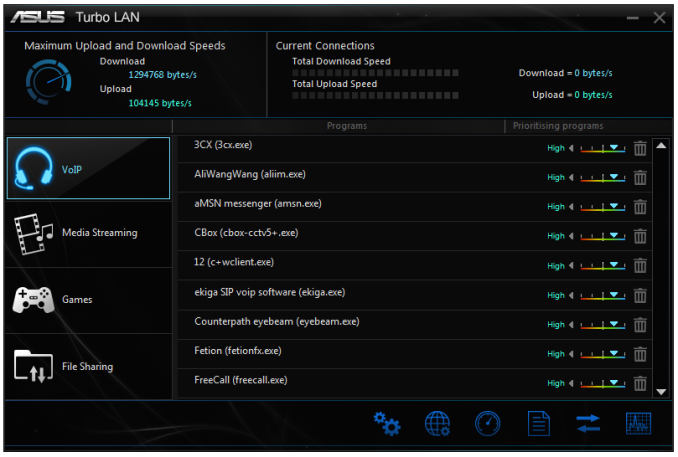
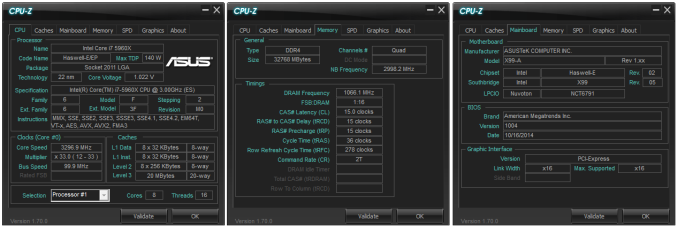
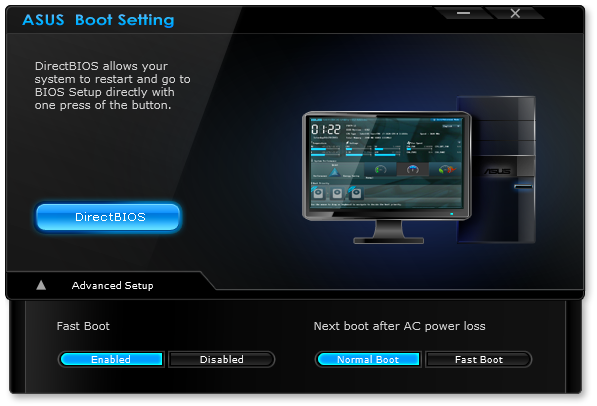














37 Comments
View All Comments
DanNeely - Tuesday, December 23, 2014 - link
No. Look at the pictures; 6 blue (3.0) and 4 black (2.0) USB ports.Until Intel goes all USB3 on it chipset, most boards with many ports are either going to do a mix of both types, fake it with hub chips, or both. And since the Skylake Leaks indicate we'll probably still be mixed USB (or hub) on higher end boards (midrange will probably be able to go all 3.0); it's probably going to be 2017 until USB3.x becomes ubiquitous.
kenshinco - Tuesday, December 23, 2014 - link
You said this board doesn't implement Multicore Turbo but its specs does says Intel Turbo boost supported. Could you elaborate more on this.Does this means it will get turbo boosted for single core only? 8 cores active can not get turbo boosted?
SuperVeloce - Wednesday, December 24, 2014 - link
This most likely means turbo boost is behaving as Intel said it should, more cores active, lower the frequency (for 5960x and all cores its usually 3-3.2ghz). Multicore turbo usually gets you highest turbo frequency for all cores (so it would leave it 3.5ghz@16threads if temperatures allow it).dcoca - Friday, January 9, 2015 - link
I have this board and Multicore is there in the bios with the opt for all cores or per core...EricCC - Wednesday, December 24, 2014 - link
Great article. I was ready to buy one until I saw the post times. 20+ seconds is horrible. My two year old Surface and one year laptop with Haswell post in 2-3 seconds and their CPUs are much slower. And my 5+ year old system is twice as fast posting.I thought EFI BIOS were supposed to be significantly faster and I expected newer machines to be faster. Have manufacturers explained the severe slowness?
Are these new motherboards any faster with Windows 8?
EricCC - Wednesday, December 24, 2014 - link
i should have said, any faster POSTING with Windows 8?DanNeely - Wednesday, December 24, 2014 - link
POST is the time spend *before* the boot loader starts your OS. In general, the more stuff that needs to be started up, the longer it will take to POST; however, I suspect that an additional factor vs Z97 boards which post in half the time is that more effort has been put into optimizing performance for the mass market product than for something that's mostly used in servers/etc where it's a much less important factor.EricCC - Thursday, December 25, 2014 - link
I am aware that POST time is pre-OS, and all the times I stated are POST only. The OS loads in around 10 seconds so most of my systems boot faster than the X99 motherboards POST. Do you think these boards would POST faster with Windows 8? I thought systems that were Windows 8 aware were able to skip part of POST or at least do something differently.I also agree that POST and boot times in servers tends not to be that important but I don't think these boards are for servers, which don't need the ability to run with multiple graphics cards or to overclock.
Do you not think that 20+ second POST times are extremely long for computers nowadays?
DanNeely - Thursday, December 25, 2014 - link
No. Your OS has nothing, and can have nothing, to do with POST time because your OS doesn't get involved until the POST is complete. It doesn't matter if you're running Windows 8. or Windows 7, or Windows 3.11, or Linux, or BSD, or BeOS.What Win8 does is to only partially shutdown by default when you turn it off. It closes down everything in userspace and then hibernates the kernel. Then when you power on, after the computer POSTs, and after the boot loader starts win8, win8 just unhibernates the kernel and restarts userland; which is faster than starting the OS from scratch. This also only helps if you're someone who turns his computer off on a regular basis instead of just leaving it up until the next patch tuesday; because in that case the patches require restarting the kernel.
These boards aren't going into servers; but 99% of consumer boards are LGA1150; which is where the OEMs put their effort. LGA2011 is an entry level server product; and 99% of the chipsets for them go into servers where it doesn't matter.
X99 is too small a market to justify any sort of performance tuning; the boards are already a lot more expensive than z97 because the tiny number of boards that are sold means there's not much to spread the engineering costs for the board layout over. If you wanted to lift the base price of the boards another $100+ each it might be possible to optimize the startup times down to the same 10s ballpark of z97. You'll probably never see desktop boards get down to the 1-3s range of thin laptops/tablets because the latter have so much less stuff to enable, and everything that they need to turn on and since everything is soldiered and non-replacable they can encode all the settings into the firmware instead of having to detect the components and determine how to configure them every time they're powered on.
ziphnor - Friday, December 26, 2014 - link
The X99-A BIOS is full of options that allow faster POST (like not looking for other drives than the boot drive etc). So it can probably be tweaked.